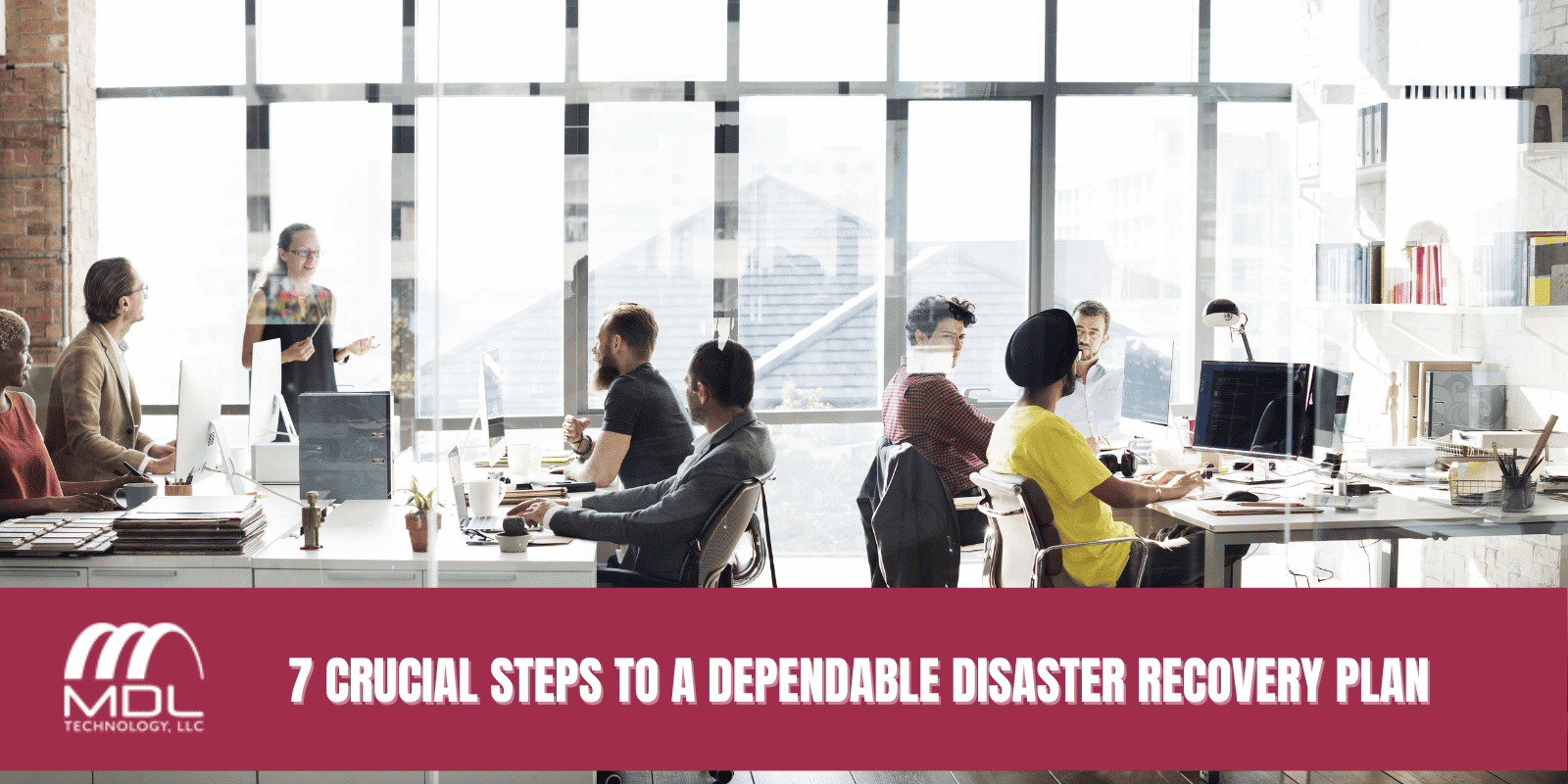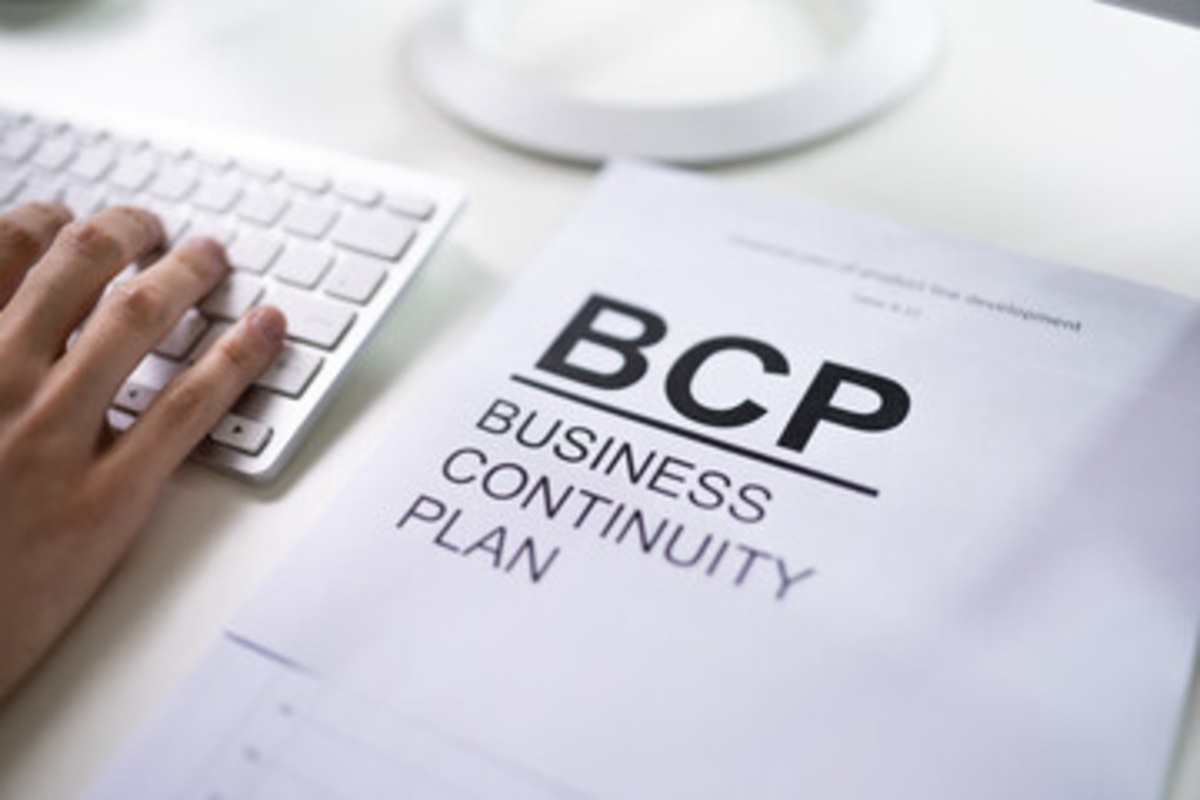You can do many things to help your business, but one of the most important is establishing a strong and dependable disaster recovery plan. Unfortunately, 43% of businesses without a business continuity plan will go out of business in the wake of a significant data loss. Are you willing to take those odds?
Hopefully, you never need to use a disaster recovery plan. But ensuring it’s there if you need it can be your strongest resource on the road to recovery.
Here are seven steps you need to consider when building your disaster recovery system.
1. Analyze the threats and weaknesses in your current plan
Do you already have a disaster recovery plan in place? Now is a great time to analyze the strengths and weaknesses of your current strategy. Looking at your plan of action when it relates to different types of disasters will help you gauge how dependable your plan is and identify areas to strengthen.
If you don’t have a plan in place, taking time to analyze different types of disasters will help you sort out what the first iteration of a disaster recovery plan should include.

Here are different types of data disasters to prepare for:
Natural Disasters
When one pictures natural disasters, property damage like burnt furniture or a flooded basement comes to mind. But what about your company data?
Natural disasters like fires, floods and storms can wreak havoc on your data storage or usage. Companies can repurchase office supplies and furniture — but a dependable disaster recovery plan is the only thing that can secure your data.
For example, a natural disaster can do significant damage if you currently use a server closet in your office to house all of your data storage. Considering the risk of this method may convince you to switch to a cloud-based system.
Human Errors
The age-old expression is true — nobody’s perfect.
Did you know that a 2021 Data Breach Survey revealed that human error was the top cause of severe data breach incidents? Unfortunately, even a thoughtful employee with suitable training can make mistakes — so having a backup plan for when humans fall short can save you from costly data loss.
Some things to consider when analyzing your preparedness for human error are:
- Do our employees have proper training to minimize user error?
- Do we have a tiered system of online permissions, so only essential personnel have admin access?
- Do we have a streamlined process in place for onboarding and offboarding employees?
Physical Disasters
Physical disasters can come in many forms. A physical break-in, loss of power or hardware malfunction can all be physical disasters that can cause data loss. Even something seemingly unrelated, like a broken cooling system, can put your data at risk.
Some things to consider when analyzing your preparedness for physical disasters are:
- Do we have a short-term and long-term solution for minimizing the impact of the loss of power?
- Do we have a universally-understood communication strategy and message to share with stakeholders?
- Do we understand who needs to be notified of any outages?
- Do we have a list of third-party companies to reach out to for help fixing the issue?

Cyberattacks
Did you know that 64% of companies worldwide have experienced at least one form of a cyber attack?
Over half of businesses have experienced the time, energy and money drain that cyberattacks can cause. And if they do get a hold of your data, the ransom can make or break many businesses. However, always knowing that you have a dependable disaster recovery plan in place when someone makes a power grab can ensure you don’t need to give in to hackers.
Some things to consider when analyzing your preparedness for physical disasters are:
- Do we have the resources to monitor, identify and mitigate outside threats to data security?
- Do we have secure and dependable access to a backup version of our data in case a data breach does happen?
- Do we have the necessary tools in place to avoid hacks in the first place?
2. Establish a recovery timeline
How quickly should everything be back up and running after a disaster? This isn’t an easy question to answer, and every disaster will throw unforeseen obstacles to slow progress. But, having a set of milestones to reach can help establish if you are ahead or behind schedule with fixing the disaster. A couple of terms that can help you with this process are:
Recovery Point Objective (RPO): this refers to the point in time in the past to which you will recover.
Recovery Time Objective (RTO): this refers to the point in time in the future at which you will be up and running again.
Having an estimate for when you should be fully functional again is a great way to identify slow-moving aspects of your overall process.
3. Backup your data
Arguably one of the most important aspects of a robust disaster recovery plan is having data to recover!
Backing up your data can be the main reason your business comes out of a disaster with few lasting consequences. An excellent data backup plan has:
- Automatic backups, so you always have the most current version of your data saved and secure.
- A secure, third-party housing to protect your data from any contagious malware.
- A facility that has a strong defense against physical or natural disasters.
- The ability to access your backed-up data at any time.
All of these aspects of a significant data backup can seriously speed up your disaster recovery timeline.

4. Map out a recovery plan
A disaster recovery plan has many moving parts, so creating a clear list of steps to enact the moment a disaster strikes will minimize confusion and ensure everyone is on the same page with how to tackle the problem. The fewer question marks there are for everyone involved, the faster you can get to the source of the issue and start solving the problem.
Here are some commonly-overlooked steps of a disaster recovery plan that your team should understand BEFORE a disaster hits:
Know who to call and when
Disaster strikes — who will be the first step in managing the issue? Setting up a phone tree ensures that all of the most helpful resources are notified of any disasters as soon as possible. This could include an internal IT team, insurance, third-party IT services, web hosters, vendors, etc.
Establish who needs to know
Who needs to know about any outages, data loss or hardware failures? Of course, your IT team. But what about clients trying to use your website, partners affiliated with your brand or other stakeholders in your company? Having a boilerplate message circulate to necessary parties ensures that everyone shares the same information and that no wires get crossed. It also minimizes the communication monitoring that IT needs to review, so they can just focus on the problem.
Communicate organizational roles and responsibilities
Does everyone know who’s in charge of what during a disaster? Establishing roles beforehand frees up management to focus on the issue at hand instead of wasting time delegating at the last minute.
5. Test the new plan for any flaws
The only way to analyze the practicality and efficiency of your new plan is to test it. (That is unless you want to wait and see how it fares against a real-life disaster!)
Your IT team or managed services team should be able to confirm the quality of your disaster recovery plan without risking data loss. It’s better to establish weaknesses or mistakes during this stage than in the midst of a real disaster.
6. Document and circulate the plan
Now that you have a plan in place, make sure relevant personnel have access to the details of that plan — especially when they are a part of it. This documented plan should answer most questions that may come up during a disaster, minimizing any unnecessary conversations during the real deal.
Here are a few tips to ensure this plan stays front of mind:
- Make sure that every relevant new and existing employee has read and reviewed this plan.
- Keep the procedure in an easy-to-find area of your data storage.
- Make sure all employees check this plan on a regular basis.
- Hold training to solidify the program and offer a space for people to discuss, ask questions and confirm everyone’s confidence in the plan.

7. Set a timeline to reevaluate the plan for updates and tweaks
Even a “perfect” disaster recovery plan won’t stay perfect forever. However, revisiting and reviewing the tactics of your disaster recovery plan consistently keeps your tactics fresh and lets your IT team implement the most current technology to improve the efficiency of your strategy.
Rely on the Professionals — We Can Help
A long list of security measures and responsibilities can help protect your company from many disasters, but as in life, sometimes problems are unavoidable. When disaster strikes, it can be overwhelming to take it all on internally. MDL can handle your entire disaster recovery program, so you can rest easy knowing your sensitive info is in good hands.
Many assume that outsourcing their technology needs comes with a hefty price tag. However, with affordable solutions for businesses of all sizes and industries, MDL Technology is there for your IT needs every step of the way. Contact us today to learn more.







